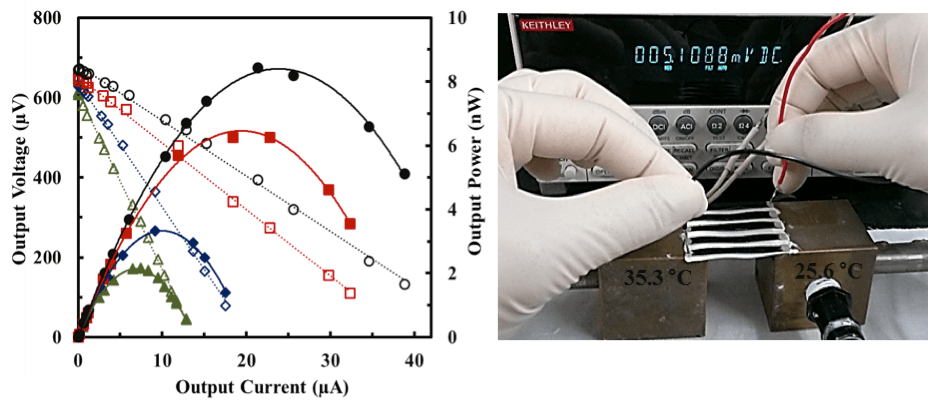Depositing thermoelectric nanocomposites via layer-by-layer (LbL) assembly allows for nanometer-scale control of structure and composition. Layering of polyaniline, graphene, and double-walled carbon nanotubes exhibits a remarkable power factor (PF = S2·σ = 1825 μW/m·K2) that is competitive with bismuth telluride (Advanced Materials 2015). More recently, an improved completely organic polymer nanocomposite was fabricated by depositing multilayers PANi, PEDOT:PSS-stabilized graphene, and PEDOT:PSS-stabilized DWNT from water-based suspensions. This thermoelectric LbL film achieved a power factor above 2700 W/m2·K at room temperature, which is the highest value ever reported for any organic material and greater than commercial-grade bismuth telluride (Advanced Energy Materials 2016). The thermoelectric power output of one micron thick LbL coatings on strips of polyester film is shown in the lower left figure, yielding 8.5 nW with ΔT = 5.6 K. The same coating deposited on cotton fabric produces ~ 5 mV with a ΔT of 9.5 K, as shown in the lower right image. This is the first step toward TE clothing that could power health sensors in apparel or power a cell phone from someone’s body heat.

